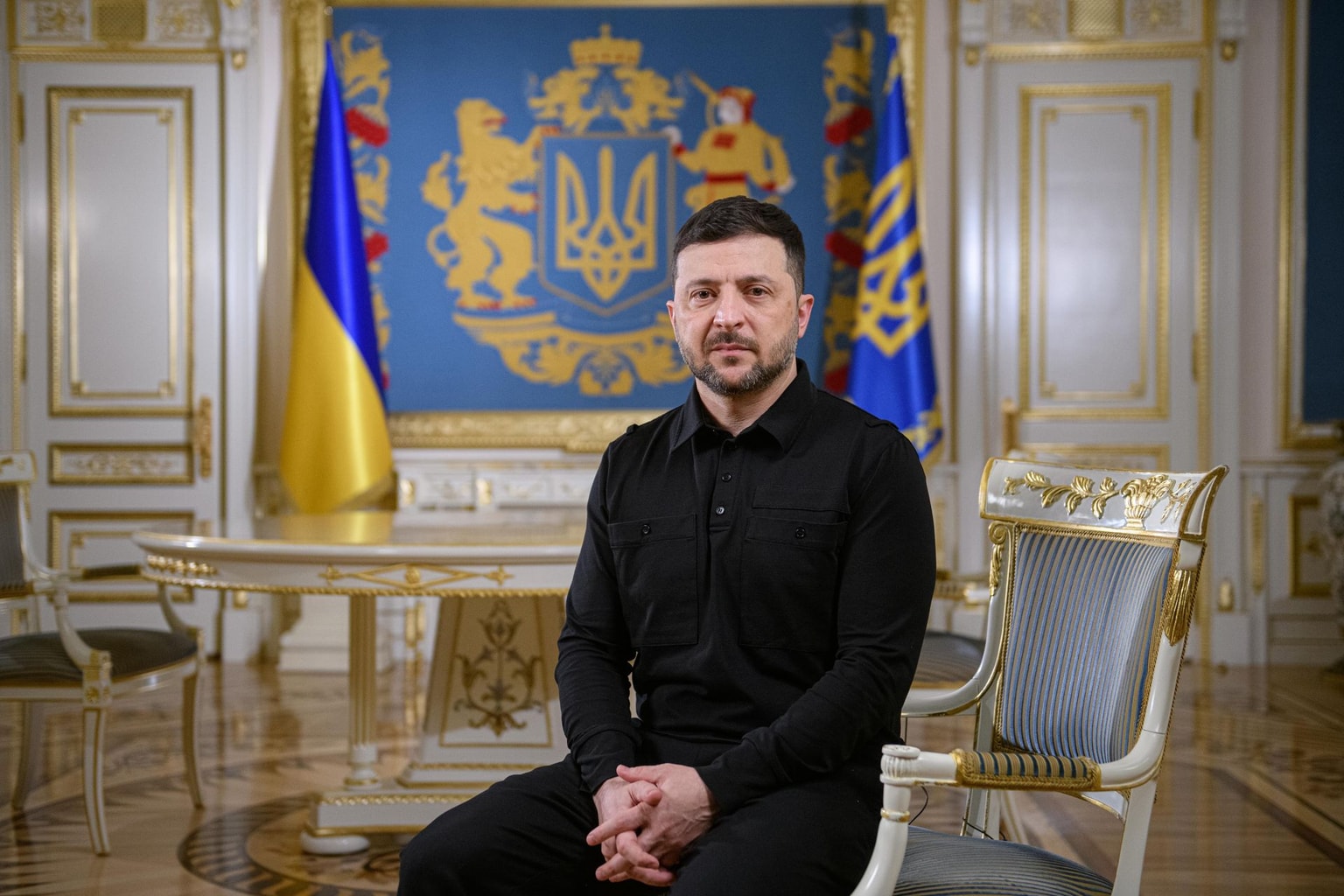
Patriot missiles — what they are and why everyone wants them
A US-made MIM-104 Patriot surface-to-air missile is launched during a live fire exercise at the Chiupeng missile base in Pingtung County, Taiwan, on Aug. 20, 2024. (Sam Yeh / AFP via Getty Images)
Amid escalating Russian aerial attacks on Ukraine, simmering tensions in the Middle East, and a Europe seeking to rearm in the face of an ever-more belligerent Kremlin, one piece of military kit in particular is currently in hot demand across the globe — Patriot PAC-3 interceptor missiles.
The U.S.-made Patriot air defense system is one of the few in the world that defend against ballistic missiles, which Russia regularly launches against Ukraine, and which Israel and Iran traded salvos of last month.
As of 2025, Ukraine had received up to eight Patriot systems, according to the New York Times, sufficient to cover only a limited area, and increased global demand for the interceptor missiles it fires is only compounding the shortfalls in Ukraine air defenses.

Why are ballistic missiles so hard to shoot down?
Unlike cruise missiles which are jet engine-powered and fly in a relatively flat trajectory, ballistic missiles are rocket-powered and launched high into the atmosphere before arcing back down onto their target.
They're only guided during the initial stages of launch, so they can be less accurate than cruise missiles, but have the advantage of reaching incredibly high speeds — sometimes more than 3,200 kilometers per hour — as they approach their targets.
As such, they are incredibly difficult to intercept, and the fewer interceptor missiles available to Ukraine, the more devastation Russian ballistic missiles are causing.
What makes Patriot missiles unique?
The Patriot system's missile manufacturer, Lockheed Martin, touts the latest interceptor as "the world's most advanced air defense missile."
A typical Patriot battery is equipped with a mix of missiles capable of intercepting ballistic and cruise missiles, as well as aircraft.
"The Patriot's advantage is its open architecture, which allows for the use of different weapons and even different radars," Kharuk said, adding that countries typically sign contracts for missiles in various configurations.

The difference between PAC-2 and PAC-3 interceptor missiles
The PAC-2 GEM-T is one of the system's legacy interceptors with a range of up to 160 kilometers (100 miles), optimized for targeting aircraft and cruise missiles.
It uses a blast-fragmentation warhead that detonates near the target rather than striking it directly.
For more advanced threats, especially ballistic missiles, the Patriot system employs the PAC-3 interceptor.
Unlike its predecessor, the PAC-3 uses hit-to-kill technology, destroying incoming warheads through direct contact rather than relying on a fragmentation blast.
Though its range is shorter, typically around 35 to 50 kilometers (20 to 30 miles), it offers greater precision and is specifically tailored for high-speed ballistic threats.
The most advanced version currently in service is the PAC-3 MSE (Missile Segment Enhancement), which features a dual-pulse motor and enhanced manoeuvrability.
This interceptor can reach higher altitudes and longer ranges than the standard PAC-3, enhancing its effectiveness against modern ballistic threats like Russia's Iskander and Kinzhal missiles, as well as North Korean KN-23.
"This is a weapon that has proven extremely effective for us," Dmytro Zhmailo, a military expert and executive director of the Ukrainian Security and Cooperation Center, told the Kyiv Independent.
"That's why Ukraine is ready to buy, lease, or simply ask for it — we see it as a matter of national security."
What's causing the shortage?
As well as increased demand, Washington has been slow to react in replenishing Ukraine's stockpile amid ongoing Russian attacks.
In early July, some Patriot missile shipments en route to Ukraine were even briefly paused in what was reportedly a unilateral decision by the Pentagon connected to a review of U.S. arsenals.
Following lengthy negotiations between Ukraine and the U.S., President Donald Trump has reportedly agreed to supply Kyiv with 10 Patriot interceptor missiles, each estimated to cost around $4 million.
"They would see it (supplying weapons to Ukraine) as risking their own future, particularly in the Western Pacific and, to a lesser extent, in the Middle East, which they view as a secondary theater."
But ten are "a drop in the ocean" compared to what Ukraine really needs to defend against Russia's aerial attacks, defense expert Andrii Kharuk told the Kyiv Independent.
"Firing at ballistic targets typically requires the launch of two missiles at once to shoot them down accurately," he said.
Kharuk added that on July 9, Russia used six Kinzhal ballistic missiles against Ukraine which may have required the use of up to 12 interceptors in a single attack.
Trump confirmed on July 13 that the U.S. will provide additional Patriots — a boost for Ukraine, as the country has limited alternatives for air defense against Russian ballistic missiles, making the need for Patriot interceptors increasingly urgent.
President Volodymyr Zelensky has been urging international partners to supply Ukraine with additional Patriot air defense systems for months. He has also emphasized that Ukraine is prepared to lease these systems and produce the missiles domestically if the U.S. grants a license.

However, the acquisition of the urgently needed weapons is progressing at a sluggish pace.
Partner countries are reluctant to part with their limited air defense systems, and ramping up production of both the systems and missiles requires significant time and substantial financial investment, according to the experts the Kyiv Independent spoke with.
Frank Ledwidge, a specialist in military capabilities and strategy at the University of Portsmouth in the U.K., said Ukraine is struggling to find suppliers for the missiles and air defense systems it urgently needs now due to decades of underfunding in weapons production across Western countries.
The U.S. has only about 25% of the Patriot missile interceptors needed to fulfill Pentagon plans, having used many in the Middle East recently, according to the Guardian.
Although the U.S. makes around 600 yearly, Iran, for example, is believed to have a stockpile of of over 1,000 ballistic missiles.
This situation also impacts supplies to partners, placing the U.S. in a precarious position. Ledwidge added that the slow pace of the U.S.'s transfer of air defense equipment to Ukraine under Trump may not be politically motivated, noting that Washington could face its own resource constraints.
"(The U.S.) clearly won't tell us how many (missiles) they have, nor should they, but I don't think they're in a good place," Ledwidge said.
"They would see (supplying weapons to Ukraine) as risking their own future, particularly in the western Pacific and, to a lesser extent, in the Middle East, which they view as a secondary theater," he added.
In an increasingly uncertain world, Lockheed Martin' vice president of PAC-3 programs, Brian Kubik, said in a statement on July 8 the company was "continuously evolving" the missile in response to the "increasingly complex threat landscape."
"Recent global events highlight the vital role PAC-3 plays in delivering integrated air and missile defense to protect lives, infrastructure and strategic assets."
Author's note:
Hi, this is Kateryna, the author of this article. Thank you for taking the time to read it. With each passing week of the full-scale invasion, Russia is intensifying its attacks on Ukraine, terrorizing civilians almost every night. That is why I sincerely hope Ukraine's urgent calls for additional air defense systems will finally be heard.
If you want more stories like this, consider joining our community today to help support our work.











